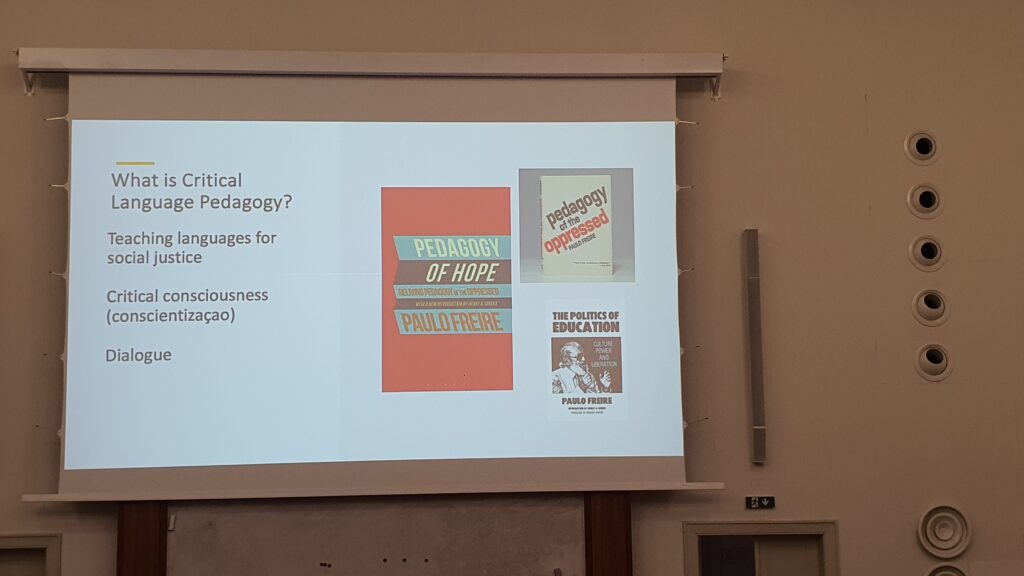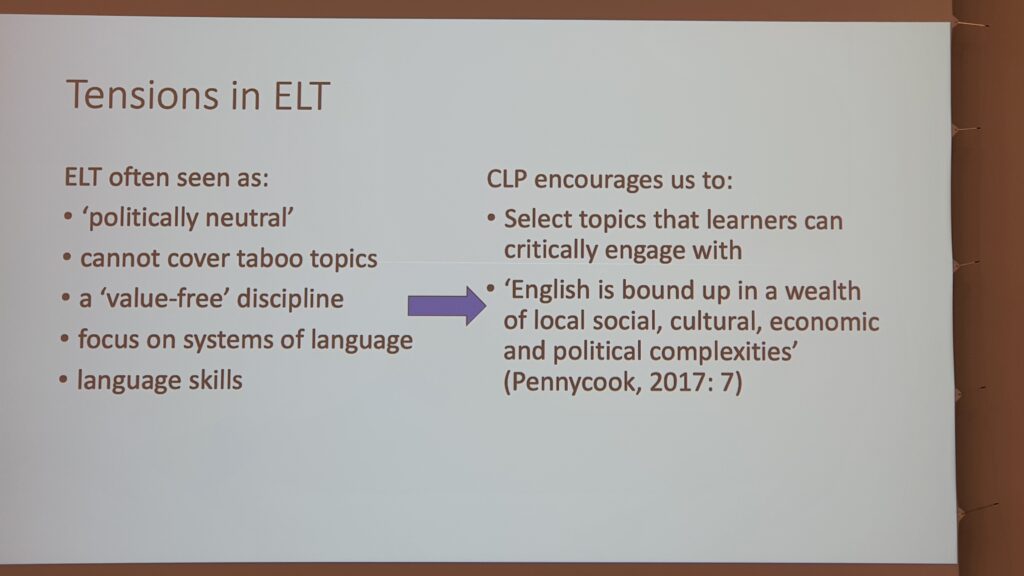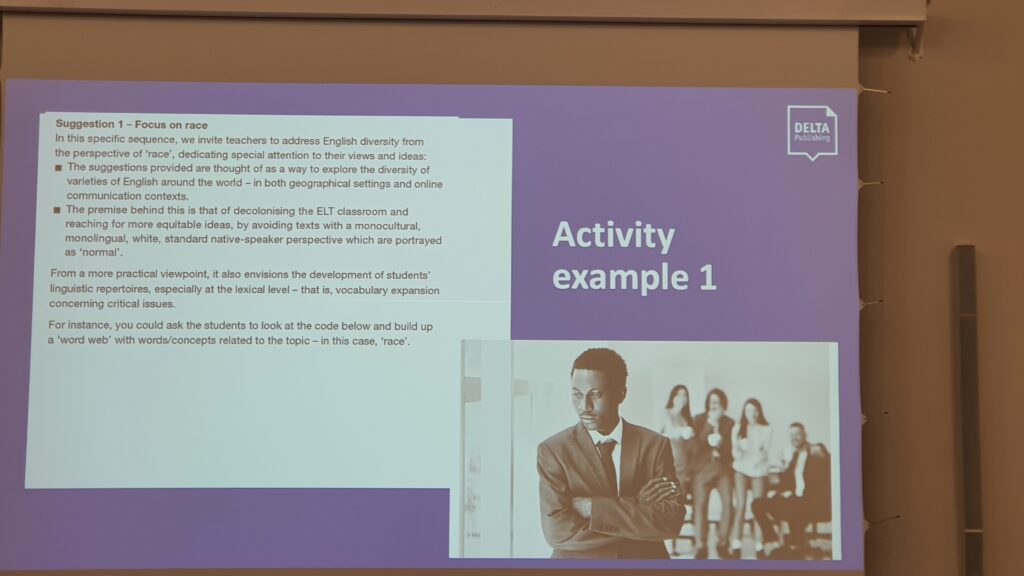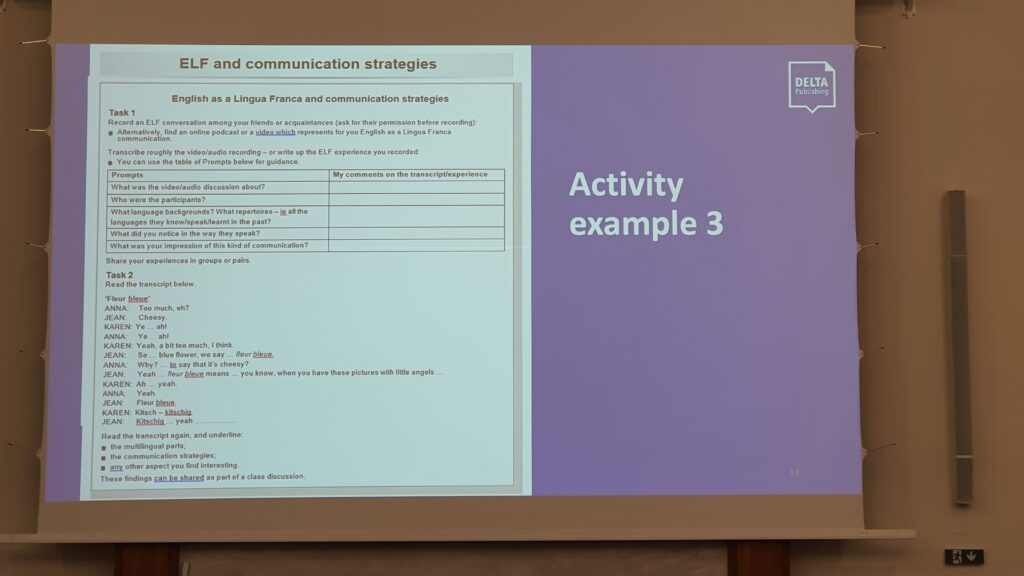These are my highlights from Alessia Cogo’s plenary.
What can I say about this plenary? It began with a tribute to Paulo Freire (respect), and Alessia Cogo encouraged us to rethink how we approach English language teaching (ELT)—moving beyond just teaching language to adopting a new, more critical approach.

Regarding some of the key points from her presentation: She stressed the importance of conducting a critical needs analysis—one that goes beyond the classroom to understand who our learners are in society and within their communities. After explaining the foundational elements of critical language pedagogy (such as problem-posing education, student-centered learning, and action orientation), she connected these concepts with English as a Lingua Franca (ELF), emphasizing that ELF is all about collaboration and mutual respect.
One of my favorite parts was the slide on “Tensions in ELT.” I attended other talks on the idea that English is far from being “politically neutral,” despite many claims otherwise. Teaching English often unconsciously reproduces colonial perspectives, biases, and the ideology of a standardized form of English.

This reminded me of my CELTA training, where we were told not to use the learners’ first language (L1). Alessia argued the opposite: using another language to communicate is not only acceptable, it can enhance learning! The “English-only” policy could actually do more harm than good, potentially traumatizing learners rather than helping them.
Also (as I’ve said before), why shy away from discussing controversial topics in class? Isn’t the goal to create spaces where students can express their viewpoints openly? Don’t we want to encourage mature, meaningful conversations? Given that English is the global lingua franca, shouldn’t it be used as a medium for engaging in dialogue and shaping the kind of world we want to live in?
How can we do this? How do we do that? Alessia, Graham Crooks, and Savio Siqueira (yes, a Brazilian professor) wrote the book ‘English for a critical mind.’ In her presentation, she shared two insightful activities from the book: one focused on discussing race (which can be adapted to address issues like “native speakers” and nativespeakerism), and another on teaching communication strategies. Make no mistake—these strategies need to be explicitly taught, as they don’t always translate directly from one language to another.


Overall, I was thrilled to attend this plenary. It reaffirmed many of my own thoughts about ELT. There’s so much more to teaching language than just teaching language itself.
